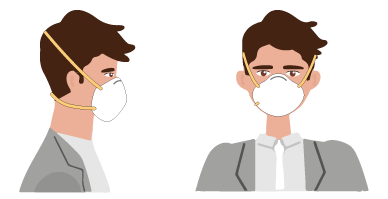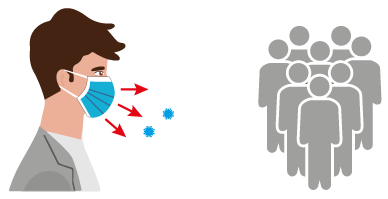The difference between face masks and respirators
Q. What is the difference between an FFP2 and a Type II R?
 |
 |
An FFP2 mask gives the lowest level of filtration (92%) of particle size as recommended by the World Health Organisation. This mask then protects the WEARER from the risk of contagion as long as it is fitted correctly and the purpose is to filter inhaled air. |
 |
 |
A Type II R surgical mask gives a filtration of 98% and the R means that it is water resistant to resist splashes of liquid common with people with the virus. The primary purpose of the mask is to protect OTHERS from the wearer who may be infected as it filters exhaled air. It does offer some protection to the WEARER but the less fitted nature allows air to draw in through the sides which will allow unfiltered airborne particles to be breathed in. |
Q. How long does the mask last?
An FFP2 mask will last a full day of use whereas it may require 2 or 3 of the Type II R masks in the same period, depending on use and activity being undertaken. No mask should be used for a second day.
Q. Can the masks be washed and re-used?
NO – the non-woven fibre fabric used in construction of the masks will break down with washing and this will reduce the minimum efficiency of filtration needed for protection. Both masks should not be washed for re-use.
Q. Can we share these masks for people doing the same job?
Under NO circumstances should these masks be shared between users due to obvious transfer of fluid particles remaining in the worn mask
Q. I have seen people with full face masks – should I be wearing one of those?
The National Health Trusts are equipping the frontline staff with masks rated to an FFP3 level and these will often be in the form of full respirator masks with replaceable filters either on the front or the sides. These are being worn due to the shortage of the normal FFP3 masks in the main BUT they do give additional protection for the eyes through where the infection is often absorbed. It is always essential that some form of protection to the eyes is worn with either wraparound glasses/goggles or a face shield.
Q. Does it fully protect me from the virus and can I then stop social distancing?
NO – it will only work regarding the prevention of oral transmission and transmission is still very likely through the hands touching an infected surface and then touching the face. The virus can last on a surface for over 48 hours in a form that will still lead to infection.
 UK
UK US
US









